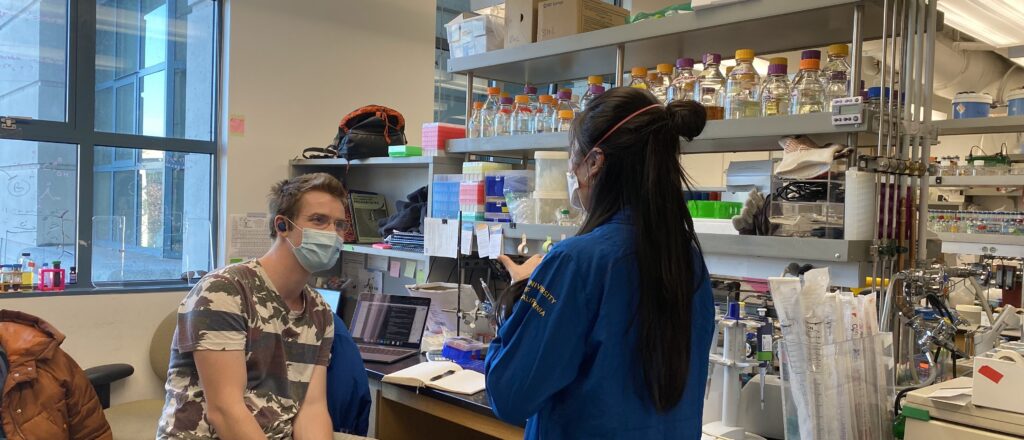Research in the Coates Lab lies at the intersection of academia and industry. We are passionate about uncovering the mechanisms behind novel microbial metabolisms in the environment, and applying this knowledge to devise effective strategies for pollution remediation and environmentally friendly approaches for industrial applications.
Some current research interests in the lab:
1. Dissimilatory Phosphite Oxidation
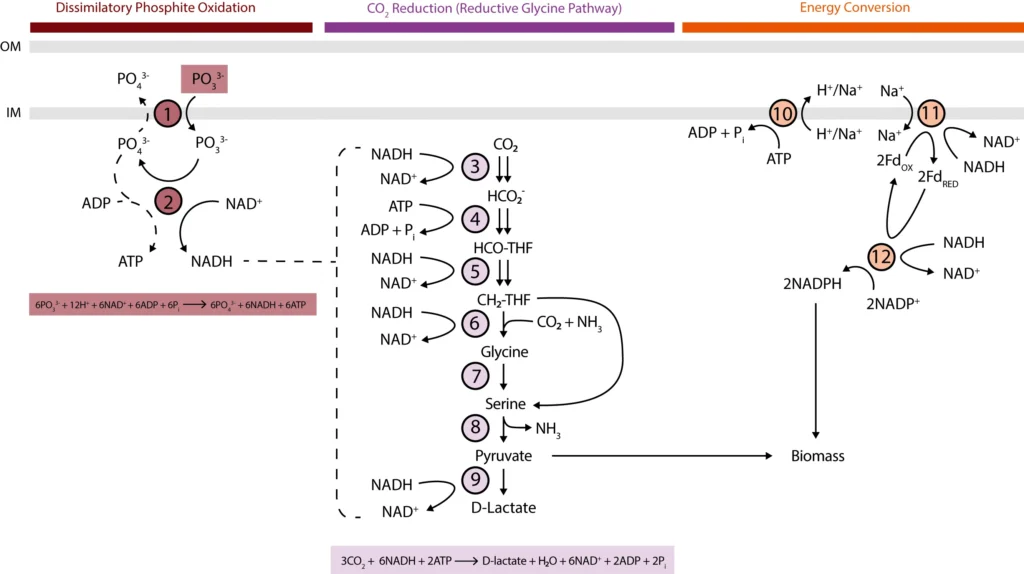
Phosphite is the most energetically favorable chemotrophic electron donor known, with a half-cell potential (Eo‘) of -650 mV for the PO43-/PO33- couple. Since the discovery of microbial dissimilatory phosphite oxidation (DPO) in 2000, the environmental distribution, evolution, and diversity of DPO microorganisms (DPOMs) have remained enigmatic, as only two species have been identified. Metagenomic sequencing of phosphite-enriched microbial communities enabled the genome reconstruction and metabolic characterization of 21 additional DPOMs. These DPOMs spanned six classes of bacteria, including the Negativicutes, Desulfotomaculia, Synergistia, Syntrophia, Desulfobacteria, and Desulfomonilia_AComparing the DPO genes from the genomes of enriched organisms with over 17,000 publicly available metagenomes revealed the global existence of this metabolism in diverse anoxic environments, including wastewaters, sediments, and subsurface aquifers. Despite their newfound environmental and taxonomic diversity, metagenomic analyses suggested that the typical DPOM is a chemolithoautotroph that occupies low-oxygen environments and specializes in phosphite oxidation coupled to CO2 reduction. Phylogenetic analyses indicated that the DPO genes form a highly conserved cluster that likely has ancient origins predating the split of monoderm and diderm bacteria. By coupling microbial cultivation strategies with metagenomics, these studies highlighted the unsampled metabolic versatility latent in microbial communities. We have uncovered the unexpected prevalence, diversity, biochemical specialization, and ancient origins of a unique metabolism central to the redox cycling of phosphorus, a primary nutrient on Earth.
2. Dissimilatory Iodate Reduction
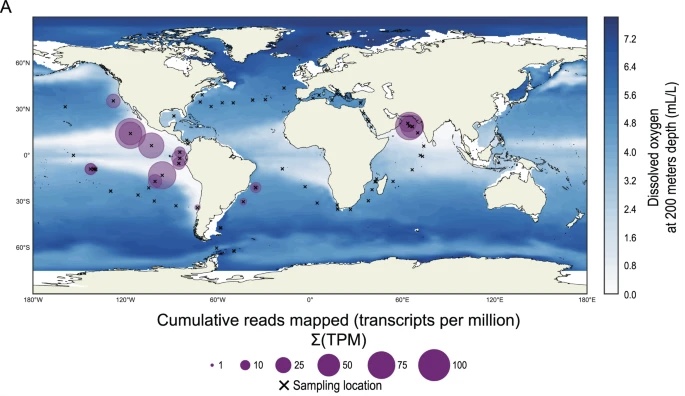
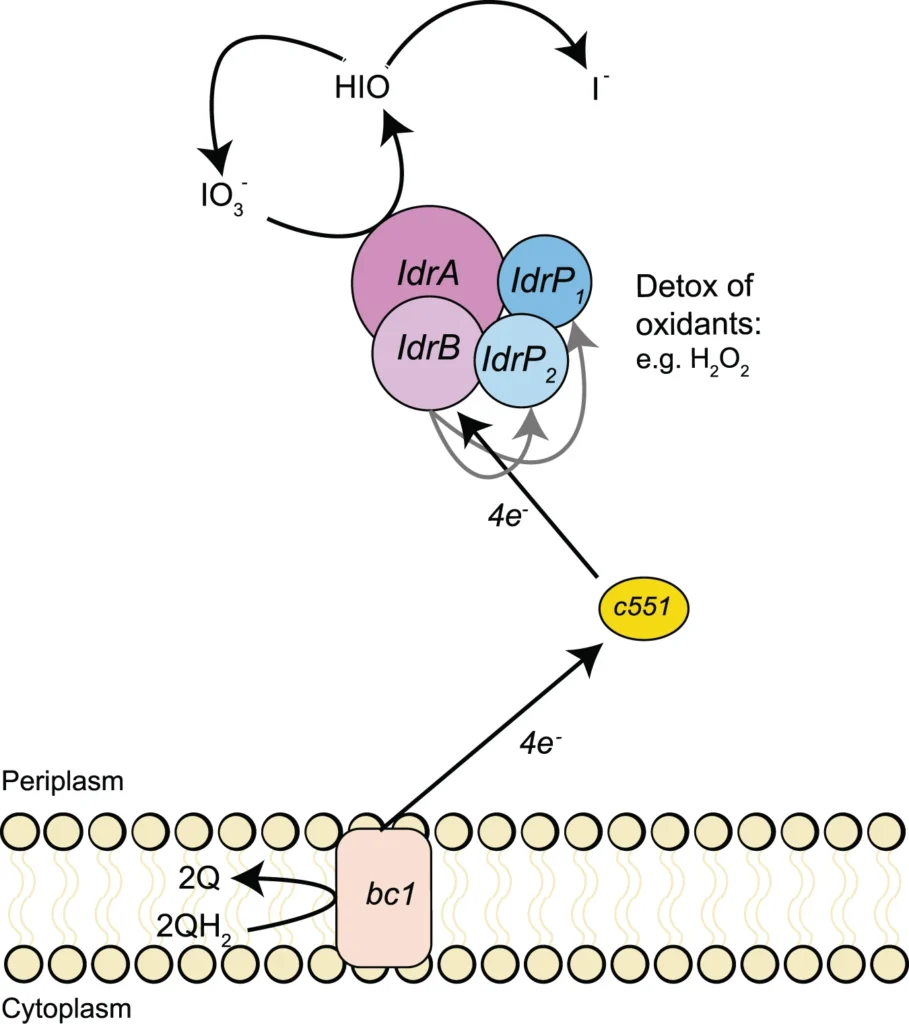
Iodine is found mainly in marine environments in various oxidation states. Its biogeochemistry in the ocean is poorly understood, but microbial IO3? reduction may explain the unexpected enrichment of the I? ion in parts of the ocean. We identified a novel marine DIRM, Denitromonas sp. strain IR-12, that obtains energy for growth by coupling IO3?reduction to acetate oxidation.
We are using multi/meta-omics and biochemical techniques to better understand the distribution, evolutionary history, and mechanism of dissimilatory iodate reduction.
3. Central Carbon Metabolisms in Dissimilatory Perchlorate Reducers

The aim of this project is to explore the application of microbiology in the production of value-added goods, specifically by utilizing perchlorate reducing bacteria. The American Pacific Fellowship is providing partial funding for this project.
4. Characterization of Protein Chemistry in Anaerobic Metabolisms
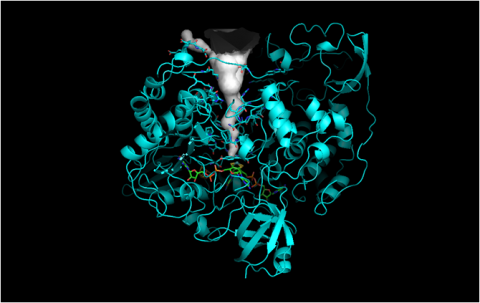
The DMSO reductase family includes proteins that are central to various anaerobic metabolisms. The Coates Lab has done extensive work on elucidating the structure, mechanism, and kinetics of one such enzyme, the perchlorate reductase. Currently, we are working on characterizing the iodate reductase, an important protein involved in dissimilatory iodate reduction.

